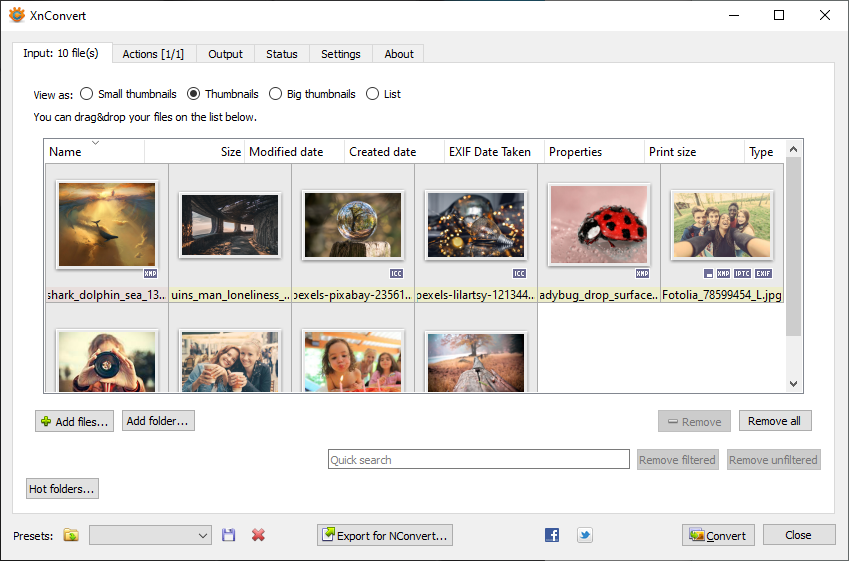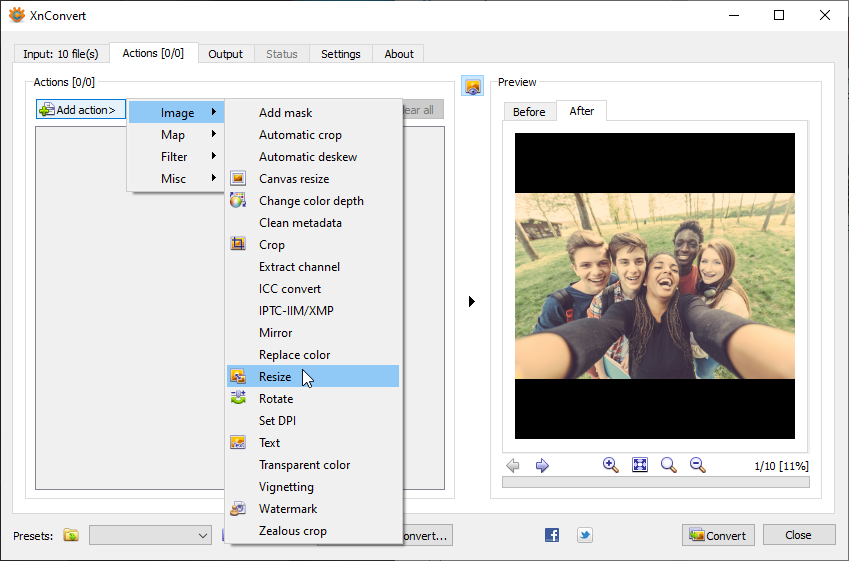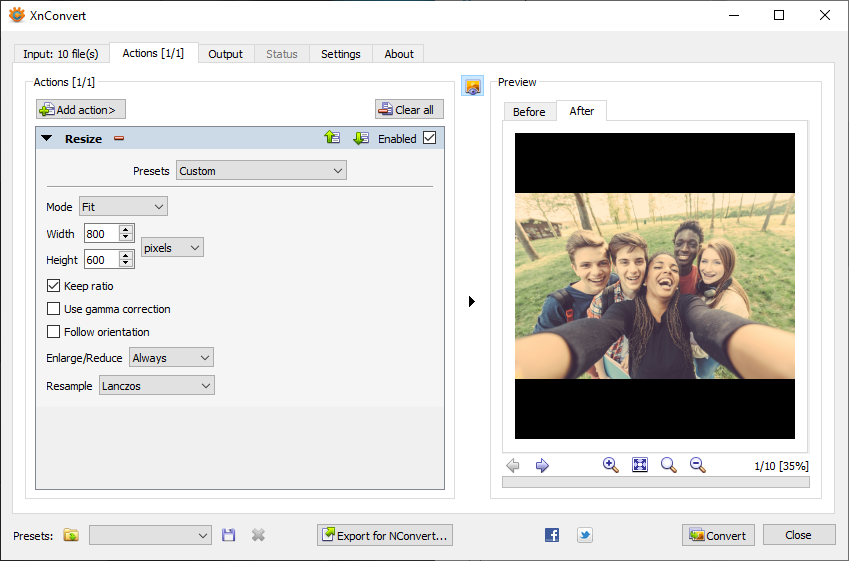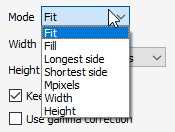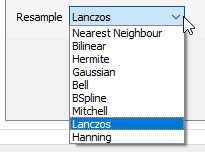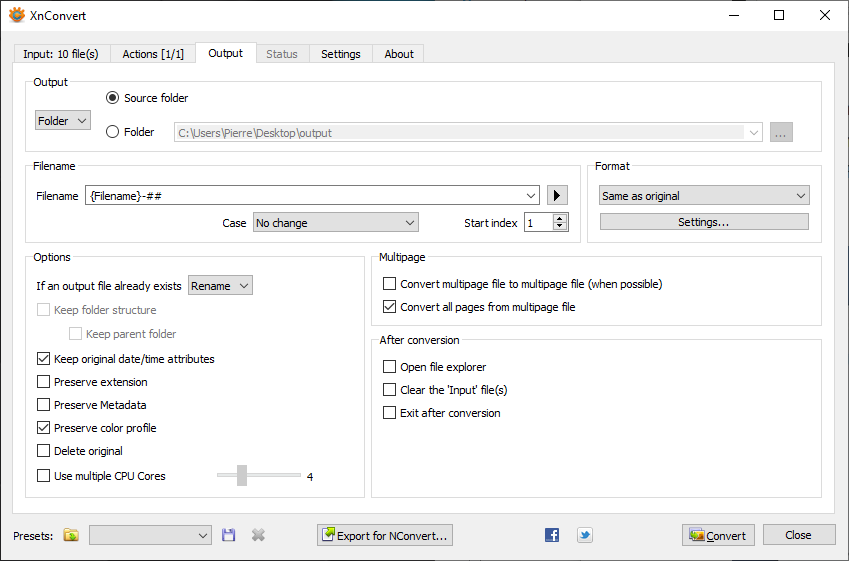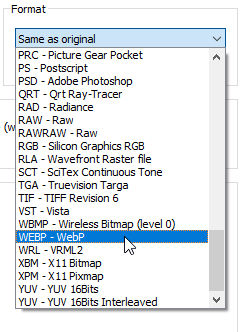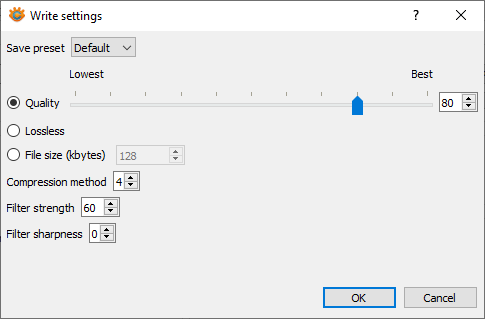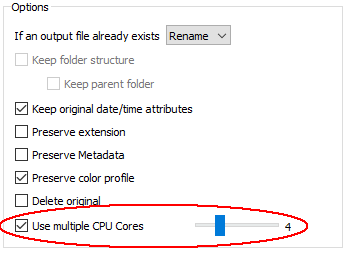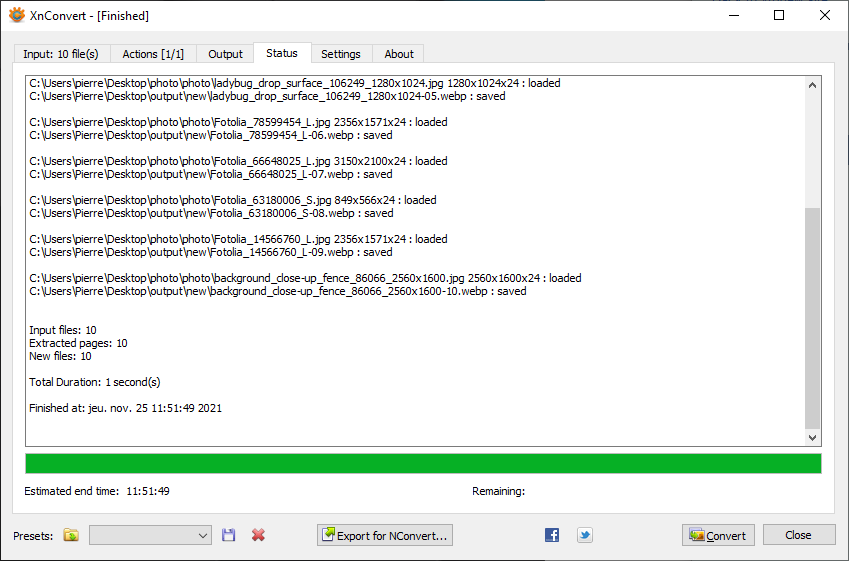How to batch convert and batch process with XnView MP
From XnView Wiki
(Redirected from How to batch convert and process with XnView MP)The powerful batch conversion of XnView MP and XnConvert lets you both batch convert and batch process your images.
With batch conversion you can...
- ...convert your image files into a different format (e.g. from JPEG to PNG)
- ...resize or crop your images
- ...apply effects like watermark, rotation, colour adjustment, and numerous effects like sharpening.
- ...rename your images.
In the step-by-step example below batch conversion is used to resize images.
Setup input
When you start the batch conversion, the dialog below is shown.
The batch conversion has several tabs which are in a logical order from left to right. Please click on "Input" tab.
On "Input" tab, all input files and folders are shown.
- You can add images by pressing "Add files" button or by drag & dropping them.
- You can add a folder and its contents using "Add folder" button. Drag & drop also works for folders.
- You can sort your files by moving files up and down. Files at the top are the files that are converted first.
- If you have selected files in the XnView browser and then started batch conversion, you will see the selected input files here.
Setup action (here: resizing)
After choosing your input files, please click on "Action" tab. In this tab you specify all the actions that you want to apply on your images.
Notes:
- The "Add actions" menu allows you to add effects like Image watermark, Text watermark, Cropping, Rotating, Image adjusting, …
- If you want to just convert your images to a different format, no action is required here and continue with "Output" tab.
Now, add the "Resize" action by clicking on "Add action > Image > Resize".
The "Resize" action is added and you can edit the parameters for resizing.
By changing the "Mode" setting, you set which new size will be used.
- Fit: The image's size fits in the given width & height
- Fill: The image's size fills the given width & height
- Longest side: Set the value for longest side
- Shortest side: Set the value for shortest side
- Mpixels: Set the value of megapixels (width * height / 1000)
- Width: Set the value for width
- Height: Set the value for height
("Keep ratio" will keep the aspect ratio of the image)
By changing the "Enlarge/Reduce" setting, you can tell the image processor to skip images with dimensions larger or smaller than that of the desired result.
By changing the "Resample" setting, you choose the quality of downscaling. "Lanczos" is often better quality for photos.
Setup output
Now if you go to "Output" tab, you can choose which output folder, filename and format you would like.
In the "Filename" field, you can use place holder.
By default, you have "Same as original" in format. The processor will try to save in the same format as the source format. If that's not possible, JPEG will be used.
Some formats come with its own settings, accessible from the “Settings” button directly underneath the pull-down menu. In case of JPEG files, the most crucial parameter is the compression/quality ratio.
By default, the processor uses only one core of your CPU. You can speed up the process by enabling "Use CPU cores".
Convert
Click on the "Convert" button to start process.
Check the "Status" tab for errors or warnings.
Optional: Save settings as preset
You can save all settings of a batch conversion (actions, parameters, format, format settings, ...) in a preset for easy reuse in a future batch conversion.
Later, you can open your saved preset by just selecting it in the drop downlist.

